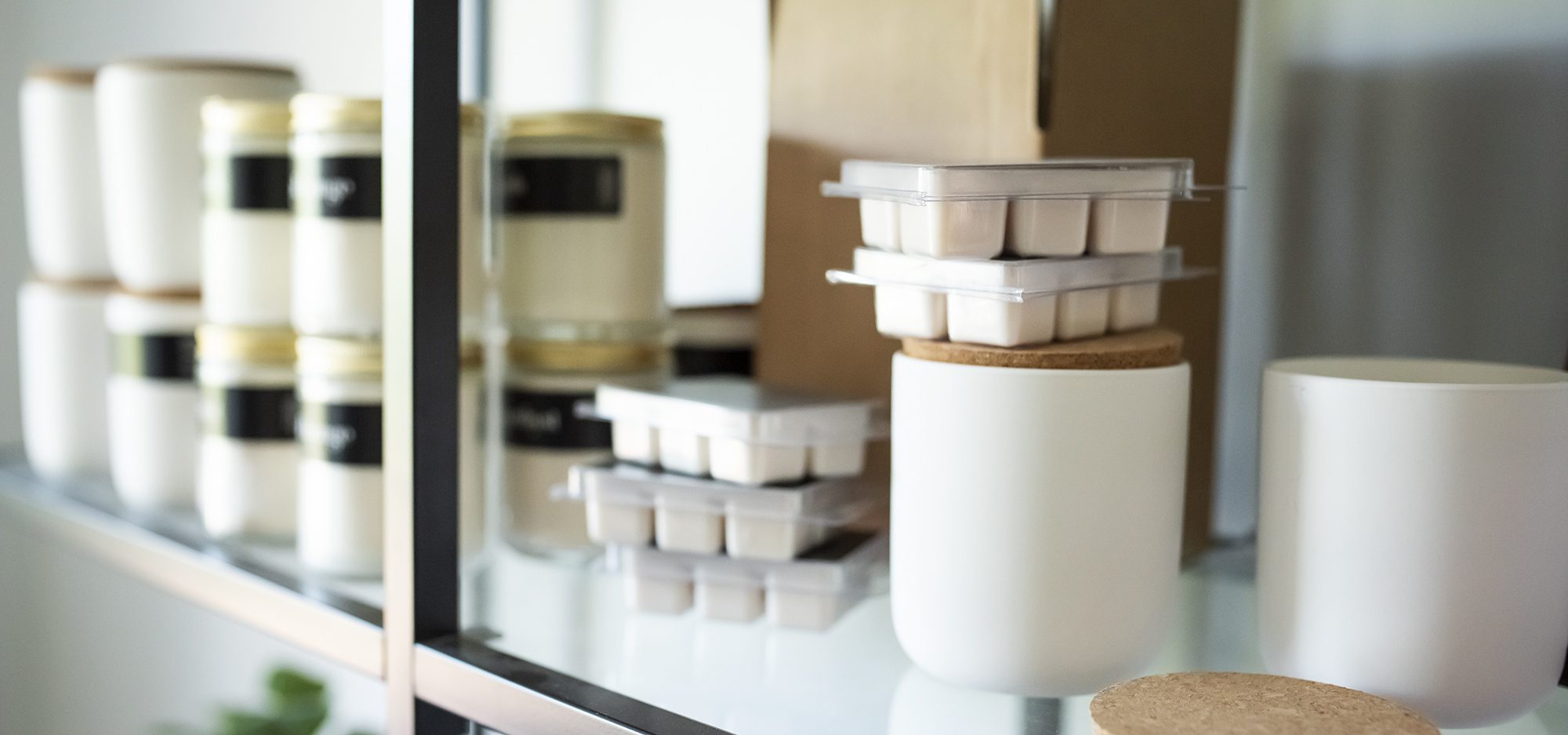To start a candle business, you will need to obtain the necessary licenses and permits from your local government. You will also need to purchase supplies, such as wax, wicks, fragrance oils, and containers. Once you have your supplies, you can start making candles!
To market your candles, you can sell them online or at local craft fairs and markets.
- Research the market for your product
- Find out who your potential customers are and what they are looking for in a candle
- Develop a business plan
- This will help you determine the cost of starting your business and how you will market your candles
- Choose a name and brand for your candle business
- This will be how customers identify your products, so make sure it is catchy and memorable
- Create a prototype of your candles
- You will need to test out different scents, sizes, and shapes to find the perfect combination for your customers
- Manufacture or purchase your candles from a supplier
- Make sure you get high-quality products that will burn evenly and smell great
How to Start a Candle Business at Home
If you’re considering starting a candle business, there are a few things you need to know. First, it’s important to choose the right type of candle for your business. There are many different types of candles on the market, so it’s important to select the one that best fits your needs.
Second, you’ll need to create a business plan and decide on your marketing strategy. Finally, you’ll need to get the proper licenses and permits before you can start selling candles.
When it comes to choosing the right type of candle for your business, there are a few things you need to keep in mind.
First, consider what type of wax you want to use. There are many different types of waxes available on the market, so it’s important to select the one that best suits your needs. You’ll also need to decide on the size and shape of your candles.
Once you’ve decided on these factors, you can begin researching which suppliers offer the best prices on supplies.
Once you’ve chosen the right type of candle and supplier, it’s time to start creating your business plan. This document will outline your goals for starting a candle business and how you intend to achieve them.
It should also include an overview of your marketing strategy and any other pertinent information about your company. After creating your business plan, be sure to get all of the necessary licenses and permits before beginning operation.
Legal Requirements for Selling Homemade Candles
If you’re thinking about selling your homemade candles, there are a few legal requirements you need to be aware of. First and foremost, all candles sold in the United States must comply with the Federal Food, Drug, and Cosmetic Act. This means that your candles must be made from safe materials and must not contain any harmful chemicals.
In addition to the Federal Food, Drug, and Cosmetic Act, there are also a few state laws that you need to be aware of. For example, in California, all candles sold must have a warning label if they contain any lead. And in New York, it is illegal to sell any candle that has a lead core wick.
Finally, when selling your candles online or through social media platforms like Etsy or Facebook Marketplace, it’s important to include all required information on your listing. This includes things like the dimensions of the candle, the type of wax used, the fragrance(s) included, and burning instructions. By including all of this information upfront, you can avoid any potential legal issues down the road.
How to Start a Candle Business With No Money
Starting a candle business doesn’t have to be expensive. In fact, with a little creativity and some hard work, you can start a candle business with no money. Here’s how:
1. Find a niche market. There are endless possibilities when it comes to candles, so finding a niche market will help you focus your efforts and attract customers. For example, you could specialize in soy candles, scented candles, or even hand-crafted candles.
2. Create a professional website. A well-designed website will give your candle business a professional image and help you stand out from the competition. If you don’t have the budget to hire a web designer, there are plenty of free web design tools available online that can help you create a beautiful website yourself.
3. Start social media accounts for your business. Social media is an excellent way to promote your products and connect with potential customers. Create accounts on popular platforms like Facebook, Twitter, and Instagram and start sharing images and information about your candles.
Be sure to use relevant hashtags so that people can easily find your posts.
4 . Develop an e-commerce platform .
Setting up an online store is essential for selling candles online . Fortunately , there are several affordable e – commerce solutions available , such as Shopify or WooCommerce . These platforms make it easy to create an attractive online store , process payments , and manage shipping .
5 . Get creative with marketing . There are lots of free or low – cost marketing strategies you can use to get the word out about your candle business . For example , consider giving away sample products at local events or creating informative blog posts or videos about candle – making tips .
Candle Business Plan Pdf
When it comes to starting your own candle business, there are a few key things you need to take into account in order to make sure you set yourself up for success. One of the most important aspects of any business plan is creating a detailed and comprehensive budget. This will help you track your spending, keep tabs on inventory, and forecast future costs.
Another critical element of your candle business plan should be market research. Knowing who your target audience is and what they’re looking for in a scented candle will help you create products that sell. Lastly, don’t forget to factor in the time and cost of production when developing your business plan.
Creating a timeline for each step of the process will ensure that everything runs smoothly once you launch your candle company.
Candle Making Business Kit
Are you looking to start your own candle making business? Great news, we have the perfect solution for you! Check out our new Candle Making Business Kit.
This comprehensive kit has everything you need to get started, including:
-A complete guide to starting your own candle making business
-A step-by-step instructional DVD
-All the supplies and materials you need to get started, including wax, wicks, fragrance oils, and more
This is the perfect opportunity for anyone interested in starting their own small business. Candles are a popular and evergreen product that people love.
With our easy-to-follow guide and all the necessary supplies included, there’s no reason not to give it a try!
Candle Business Start Up Cost
Starting a candle business can be relatively inexpensive, depending on the scale of your operation. If you’re planning to produce candles on a small scale in your home kitchen, your start-up costs will be minimal. However, if you’re planning to open a larger commercial production facility, there will be some significant costs associated with that.
Here’s an overview of what you can expect to spend when starting a candle business:
1. Equipment Costs: Depending on the size and scope of your operation, you’ll need to invest in some basic equipment. This could include things like wax melting pots, wick dippers, pouring jugs and molds.
If you’re planning to produce large quantities of candles, you’ll also need industrial-sized equipment like wax melters, heat guns and ventilated work tables. Expect to spend around $500-$1000 on equipment, depending on the size of your operation.
2. Raw Materials Costs: Of course, you’ll need to purchase the raw materials for your candles – namely wax, wicks and fragrance oils.
Wax can cost anywhere from $0.50-$5 per pound, depending on the type of wax you use (paraffin or soy). Wicks typically cost around $0.10 each, while fragrance oils can range from $3-$30 per ounce bottle. You’ll need about 2-3 pounds of wax per dozen candles (4 ounces per candle), so plan accordingly when purchasing your raw materials.
3 . Packaging Costs: Unless you plan on giving away your candles as gifts or selling them at craft fairs/farmers markets without packaging them first, you’ll need to factor in packaging costs as well. This could include things like boxes or cellophane bags for holding finished products as well as labels and stickers for branding purposes .
You can find packaging supplies at any craft store or online retailer; expect to spend around $200-$300 on packaging materials depending on the quantity/quality level you require .
4 . Miscellaneous Costs: There are always miscellaneous costs associated with any business venture – things like marketing expenses , website design fees , etc .
These costs will vary widely depending on how big or small-scale your operation is; set aside at least 10% of your total budget for miscellaneous items .
Marketing Strategy for Candle Business
When it comes to marketing a candle business, there are a few key strategies that can help you succeed. First and foremost, it’s important to identify your target market and craft your messaging accordingly. Are you selling candles to consumers or businesses?
What type of customers are you targeting? What need does your product fill? Once you know who you’re targeting and what needs your product fills, it’ll be much easier to create effective marketing campaigns.
Another key element of success is making sure your products stand out from the competition. Candles are a very competitive market, so it’s important to find ways to make your products unique. This could include offering a unique scent or flavor profile, using creative packaging, or partnering with local businesses to sell your candles in their stores.
Finally, don’t forget the power of word-of-mouth marketing. Make sure your current customers are happy with their purchase and they’ll be more likely to tell their friends about your business. You can also encourage customer reviews and testimonials on social media and other online platforms.
When potential customers see that others have had positive experiences with your candles, they’ll be more likely to give them a try as well!
Candle Business Ideas
Candle business ideas are often inspired by a love of candles and a desire to be your own boss. If you’re looking to start your own candle business, there are a few things you should consider before getting started.
First, decide what type of candles you want to sell.
There are many different types of candles on the market, from scented soy candles to beeswax pillars. Consider what type of candles would best suit your target market.
Next, develop a business plan.
This will help you determine the costs associated with starting and running your candle business, as well as set financial goals.
Finally, choose a name and branding for your candle business. Your name and branding should reflect the type of candles you sell and appeal to your target market.

Credit: www.candlescience.com
How Much Does It Cost to Start a Candle Business?
Starting a candle business can be a relatively low-cost endeavor. The biggest cost will likely be for the supplies needed to make the candles, which can range from $100 to $1,000 or more depending on the type of candles you want to make and the quantity you plan to produce. Other costs may include renting space for production and storage, as well as marketing and advertising expenses.
However, with some careful planning and budgeting, it is possible to start a successful candle business on a shoestring budget.
Is Candle Making Profitable?
Yes, candle making can be profitable! There are a few things to keep in mind when determining if candle making is the right business for you. The first thing to consider is your target market.
Who are you selling your candles to? There are many different types of candles on the market, so it’s important to find your niche. Are you selling luxury candles or more affordable options?
Once you know who your target market is, you can better determine your pricing.
It’s also important to factor in the cost of materials and production when setting prices for your candles. If you’re selling high-end candles, you’ll need to charge more to cover the cost of materials and production.
However, if you’re selling more affordable options, you can still make a profit while keeping prices low.
Another thing to consider is overhead costs. Do you have a brick-and-mortar store or are you selling online?
Selling online generally has lower overhead costs than running a physical store, but both options can be profitable.
Finally, it’s important to have a solid marketing strategy in place. How will people learn about your candles?
Make sure you have a plan for promoting your products before launching your business.
If you keep these things in mind, candle making can be a very profitable business!
Is It Hard to Start Candle Business?
Starting a candle business can be a great way to earn extra income, or even turn it into a full-time job. But like any business, there is a certain amount of work that goes into setting up and running a successful candle company. Here are some things to keep in mind if you’re thinking about starting your own candle business:
1. Research the market. Before you start making candles, it’s important to find out what kind of demand exists for them in your area. Are there already many other businesses selling candles?
What types of candles are most popular? What price point do people seem willing to pay? Answering these questions will help you determine whether starting a candle business is right for you and what type of candles you should make.
2. Choose your niche. Once you know what kinds of candles are in demand, it’s time to choose the niche that best fits your interests and strengths. Are you passionate about soy candles?
Do you want to make luxury scented candles? Deciding on your specialty will help guide the rest of your decisions as you build your business.
3. Create a business plan.
Just like any other business, a successful candle company needs a well-thought-out business plan. This document will outline your goals, strategies, marketing plans, and financial projections. Having a clear plan from the start will help keep you focused as you grow your business.
4 . Set up shop . Once you have all the logistics figured out, it’s time to set up shop! This may mean renting space in an existing retail location or setting up an online store . If you’re selling online , consider using platforms like Etsy or Shopify . Whichever route you choose , be sure to have everything in place before starting to sell – this includes acquiring all the necessary licenses and permits .
5 . Start marketing ! Now that your candle business is up and running , it’s time to start spreading the word ! There are many ways to market a small business , so get creative and think outside the box . Some ideas include hosting pop – up shops , partnering with other local businesses , or giving away free samples . Whatever marketing strategy you choose , make sure it aligns with your overall brand identity and target audience .
How Much Money Does a Candle Business Make?
There is no one-size-fits-all answer to this question, as the amount of money that a candle business makes can vary greatly depending on a number of factors. However, we can take a look at some average figures to get an idea of how much candle businesses tend to make.
According to The Balance Small Business, the average profit margin for a small business is between 3% and 7%.
This means that for every $100 in sales, the business will make an average of $3-$7 in profit. Of course, there will be some businesses that make more than this and others that make less, but this gives us a general idea.
Now let’s look at some specific numbers.
According to Statista, the average revenue for a candle company in the United States is $58 million. Applying ourprofit margin range of 3%-7% to this figure, we can estimate that the average candle business in the US makes between $1.74 million and $4 million in profit each year.
Of course, these are just averages and your actual profit will depend on many factors including your pricing strategy, marketing efforts, overhead costs, etc.
But hopefully this gives you a better idea of how much money you could potentially make with your own candle business!
How To Start A Candle Business In 4 Steps | Baroque Candle Co.
Conclusion
If you’re considering starting your own candle business, there are a few things you need to know. First, research the market to see if there’s a demand for candles in your area. Next, create a business plan and set some financial goals.
Once you’ve done that, it’s time to start sourcing materials and making your first batch of candles!
To get started, research the market to see if there is a demand for candles where you live. Look online and in local stores to get an idea of what types of candles are popular and what prices they sell for.
This will help you determine if there is a market for your product and how much competition you’ll be up against.
Next, create a business plan. This doesn’t have to be anything formal – just something to help you map out your goals and objectives.
What kind of candles do you want to sell? How many do you hope to sell each month? What will your overhead costs be?
Answering these questions will give you a better idea of whether or not starting a candle business is right for you.
Once you have all of that figured out, it’s time to start sourcing materials and making your first batch of candles! There are lots of great online resources that can help you with this process.
And once you’ve made your first sale, don’t forget to celebrate – running your own business is hard work but it’s also incredibly rewarding!



